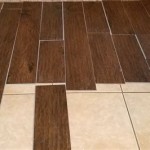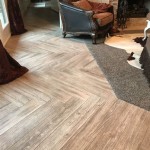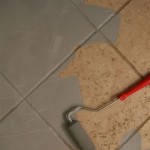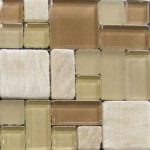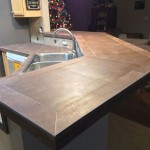Easiest Way to Remove Floor Tile Adhesive
Removing floor tile adhesive can be a daunting task, especially for those unfamiliar with the process. Different types of adhesives require different removal methods, and the age and condition of the adhesive also play a role. However, with the right tools and techniques, you can effectively remove floor tile adhesive without causing significant damage to the underlying surface.
Understanding Floor Tile Adhesive
Floor tile adhesives are formulated to provide a strong and durable bond between tiles and the subfloor. They come in various forms, including mastic, thinset, and epoxy. Mastic adhesives are typically water-based and easier to remove, while thinset and epoxy adhesives are stronger and more difficult to remove. The type of adhesive used will determine the best removal method.
Prepare for Removal
Before attempting to remove floor tile adhesive, it's essential to prepare the area properly. Clear the space around the affected area, ensuring there are no obstructions. Wear protective gear, including gloves, eye protection, and a mask, to prevent skin irritation and inhalation of dust or fumes. It's also important to have suitable tools on hand, such as a scraper, putty knife, a utility knife, a hammer, a chisel, and a wet/dry vacuum cleaner.
Methods for Removing Floor Tile Adhesive
The easiest way to remove floor tile adhesive depends on the type of adhesive and the condition of the surface. Here are some commonly used methods:
1. Scraping
Scraping is an effective method for removing mastic adhesives and some thinset adhesives. Use a scraper or putty knife to loosen and lift the adhesive from the surface. For stubborn areas, you can use a hammer and chisel to break up the adhesive before scraping. It's essential to work slowly and carefully to avoid damaging the underlying surface.
2. Chemical Removers
Chemical removers are a popular option for removing stubborn thinset and epoxy adhesives. These removers are designed to soften and dissolve the adhesive, making it easier to remove. Apply the remover according to the manufacturer's instructions, allowing ample time for it to work. Once the adhesive is softened, it can be scraped or wiped away. However, it's crucial to test the remover on a small, inconspicuous area first to ensure it doesn't damage the surface.
3. Heat
Heat can be used to soften and loosen some adhesives, making them easier to remove. A heat gun or a hairdryer can be applied to the adhesive, allowing it to melt and become more pliable. Once the adhesive is softened, it can be scraped or wiped away. Be cautious when using heat, as it can damage the underlying surface if applied improperly.
4. Mechanical Removal
In some cases, mechanical removal may be necessary to remove stubborn or deeply embedded adhesives. This method involves using a grinder, sander, or other abrasive tools to remove the adhesive. This method is generally considered the most aggressive and should be used with extreme caution to avoid damaging the underlying surface.
After removing the adhesive, it's important to clean the surface thoroughly to remove any remaining residue. Use a stiff brush, vacuum cleaner, or damp cloth to clean the area and remove any debris. Lastly, inspect the surface for damage and make any necessary repairs before proceeding with your next project.

How To Remove Tile Adhesive With A Multi Tool

How To Remove Old Floor Tile Adhesive All Stripped

How To Remove Floor Tile Adhesive Commercial Flooring Suppliers Supplies

How To Remove Tile Adhesive Maid2match

How To Remove L And Stick Floor Tile A Erfly House

How Do You Remove Old Tile Adhesive

Removal How To Remove Old Vinyl Tiles Home Improvement Stack Exchange

How To Remove L And Stick Floor Tile A Erfly House

How To Remove Tile Adhesive Maid2match

3 Easy Ways To Remove Ceramic Tile Wikihow
Related Posts

